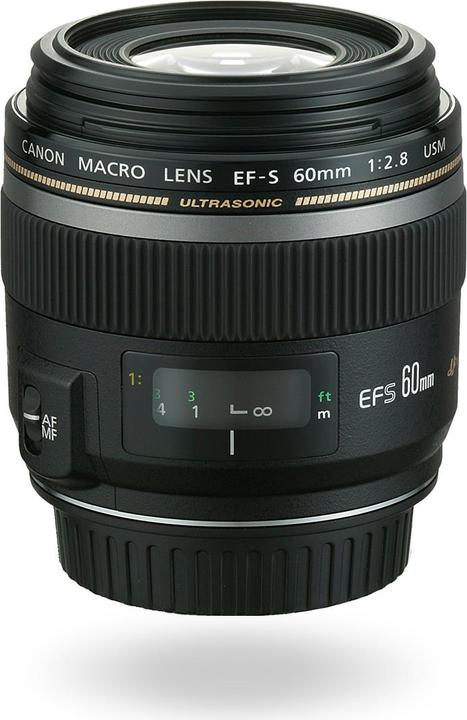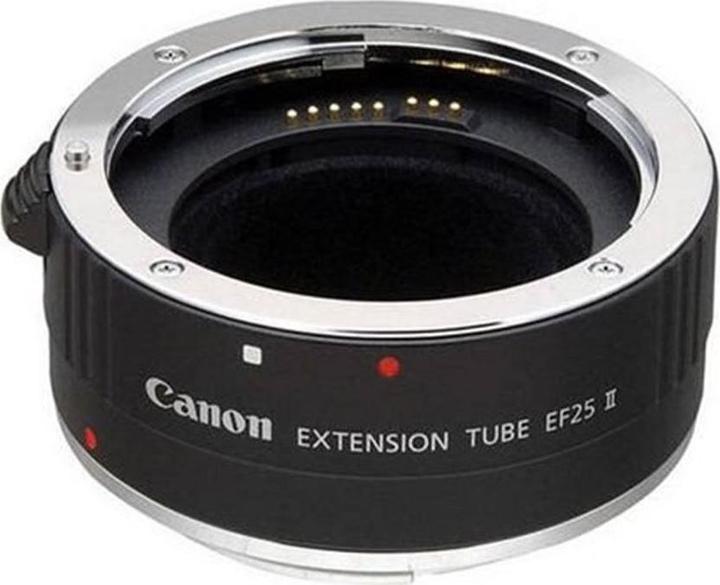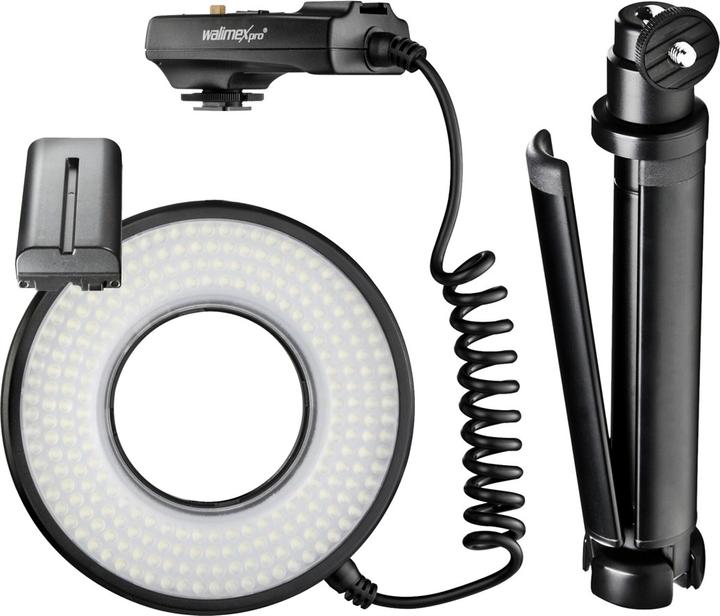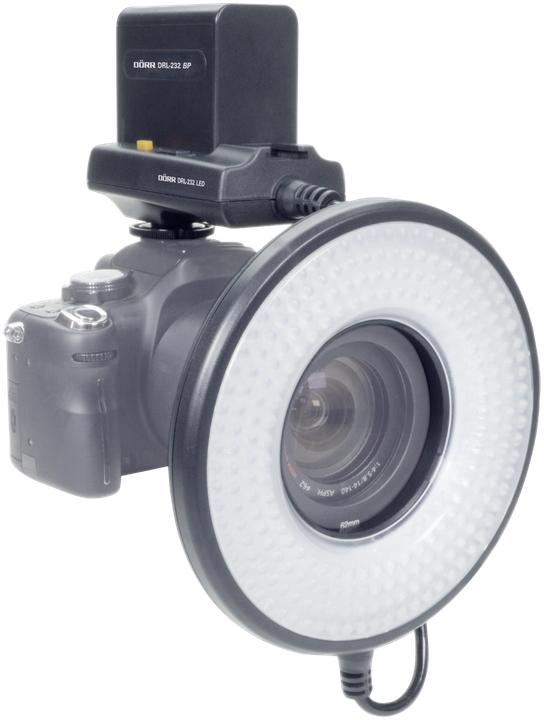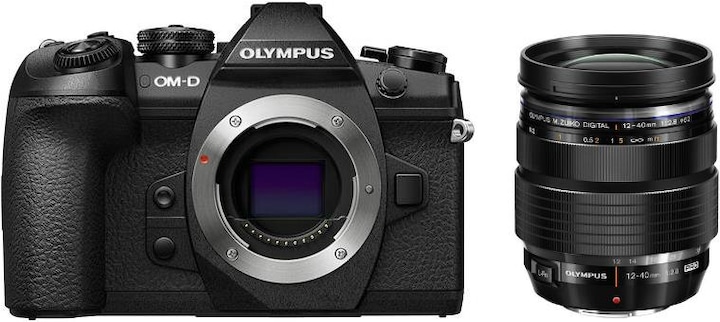
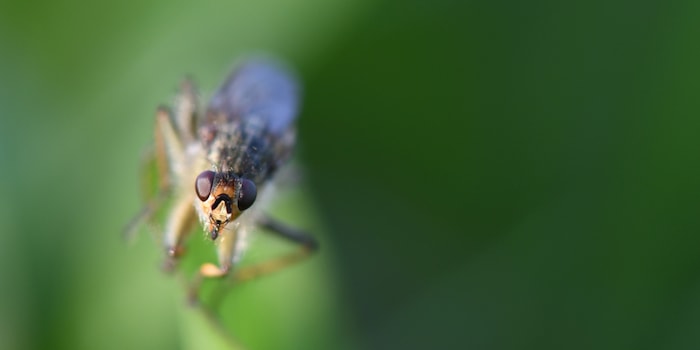
What you need for macro photography
The most important aspect of macro photography is, of course, the lens you use to focus on short distances. Read on for tips and tricks on macro photography and to find out what you need to look out for when you’re buying a lens.
In macro photography, small things are made to appear big. Subjects become larger when you get closer to them and/or when you zoom in. But for that, you need special lenses. There are also other tools that make macro photography that bit easier, such as special macro flashes. You’ll find all the details in this article.

The important thing to note about lenses: the closest focusing distance
The closest focusing distance is the shortest distance you can be away from the subject while it’s still in focus. Macro lenses are different from other lenses in that the closest focusing distance is shorter. You can get closer to the subject so it looks bigger.
The camera measures the distance of the subject from the sensor. That means you need to be the equivalent of the size of the object away from the lens in order to get the best distance. For instance, if a lens is 10 cm long and the closest focusing distance is 30 cm, the minimum distance between the lens and the subject is 20 cm – or even less when you consider there’s another 3 to 4 cm between the lens and sensor on a single-lens reflex (SLR) camera.
Both lenses below have similar focal lengths. The closest focusing distance on the first is 28 cm, making it suitable for macro photography. The second lens, on the other hand, can only start to focus at 85 cm.
So why doesn’t every lens just have a short closest focusing distance, you may be wondering. For one thing, it would make lens construction more complex and the product more expensive, heavier and slightly bigger. There’s also the fact that autofocus is slower since the motor has to travel further. That’s why some lenses let you limit the focus area with a slider – this speeds up autofocus slightly.
Extension tubes shorten the closest focusing distance. But they guzzle up light. If you’re using a lens that hasn’t been optimised for macro photography, you’ll need to attach it backwards with a reverse ring. Meanwhile, if you’ve got a macro lens, you’ll want to check the closest focusing distance doesn’t get too short. I’m guessing you’re not interested in focusing on the interior of the lens.
What about focal length?
With zoom lenses, you can vary the closest focusing distance with the zoom factor. However, most macro lenses have a fixed focal length. The standard focal length for a macro lens is somewhere between 60 and 100 mm.
Tele macro lenses have a focal length of about 100 mm and sometimes even more. They have their pros and cons. Tele macro lenses give you the same magnification from a greater distance. That has the following advantages:
- You can photograph animals that don’t let you get up too close to them.
- As you’re further away, there’s no chance of you blocking the light with your camera or distorting the scene in some other way.
But you also have to factor in these drawbacks of a shorter focal length:
- Your photographs will be more susceptible to blurring.
- Tele macro lenses are bigger, heavier and, more often than not, also more expensive.
As you can also use any macro lens for other purposes, your decision will also depend on what else you want to do with the lens and whether or not you already have a similar focal length in your collection.
As always when you’re choosing a focal length, you have to take into account the size of the sensor. With an APS-C camera, a 40 mm lens will generate the same image ratio as a 60 mm macro lens in a full-frame camera. This field of view is universal. A 60 mm lens in an APS-C camera, on the other hand, is the equivalent to a 90 mm lens in a full-frame camera. This field of view is suitable beyond the realms of macro photography; it’s especially good for portraits.
How big will the thing look on the picture?
See all the macro lenses in our shop. On the left hand side you can filter by closest focusing distance. But bear in mind you’ll only get an idea of how big the subject will appear when you look at the closest focusing distance and focal length together.
Manufacturer specifications often tell you the image ratio. The standard value for a regular lens is between 1:4 and 1:10, while a real macro lens achieves an aspect ratio of 1:1. What does that mean? It’s quite straightforward. Take an insect that’s 12 mm long, for instance. When you have a 1:1 image ratio, it will also measure 12 mm on the sensor.
That brings us to sensor size and the amount of space in the image the insect fills. An APS-C sensor is 24 mm long, so the insect would take up half of the length of the picture. However, on a full-frame sensor (36 mm long) it would only take up a third.
Even the aspect ratio alone doesn’t tell you whether or not you can take a photo to fill the frame. What it does do is give you a good idea of the macro capability of the lens. You’re good to go with a 1:1 scale, even with a large sensor.
It goes without saying the extension tubes I mentioned above will increase the aspect ratio, as they let you get closer to the subject.
Depth of field
In close range, depth of field is much shallower than in mid-range and long shot photographs. Not only is the background blurry, but parts of the main subject of the shot are too. That can end up being a problem. For a start, you can hardly identify anything in the backdrop. There’s also the fact that a single millimetre difference can give you an out of focus image.


The most straightforward solution is stopping down. While almost everything is out of focus with an f/2.8 aperture, you can see a lot more with an f/9. However, you need longer exposure times when you’re using a closed aperture. That means that a lot of the time you need a tripod – or rather a mini tripod so you can get closer to the ground.
Taking shots of animals with a tripod can be quite tricky. By the time you’ve set it up, the fly is away. But the thing is, getting the subject in focus is especially important when it comes to insects. You certainly want to be able to see the eyes clearly, but as much as possible, you also want the rest of it in focus. As you can see below, I didn’t manage to get the eyes and hair in focus at the same time with an f/10 aperture and 105 mm focal length. That’s despite the fact they’re almost at the same level.
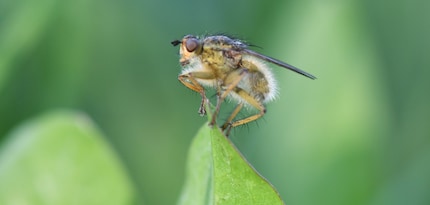
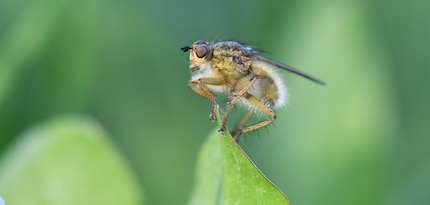
That meant I had to do some more stopping down. In some circumstances, it’s too dark so you have to help it along with artificial lighting. A normal flash is no good, though as it can cause overexposure, hard light and, in the worst case scenario, the lens can cast a shadow – especially when you’re taking shots extremely close up. So if you are going to use a flash, make sure it’s a special macro flash.
As you can see from the macro flashes available in the digitec shop, these flashguns have lights all the way around or at least on the side to illuminate the subject evenly.
For photographing at home, this will give you a soft yet bright light for small objects even with a mini studio.
Here’s a guide for all the DIYers out there:
What about the camera?
Almost every digital camera can be used for macro photography. A flip-out screen is handy when you’ve got the camera on or near the ground, something that’s pretty common in macro photography. It can be tricky to get a glimpse of the viewfinder or the display. Some displays can also be flipped out to the side for portrait format shots. An example of that is Fujifilm X-H1.
The good news is there is a workaround: with a Wi-Fi enabled camera (which are standard these days) you can transfer the viewfinder image to your smartphone and operate it from there. This prevents any camera shaking and blurring that can happen when you press the shutter-release button, even if you’re using a tripod. That being said, some photographers prefer the traditional cable release, following the logic that something that doesn’t rely on Wi-Fi isn’t not going to give you Wi-Fi connection issues.
Olympus has a camera that nails something called focus stacking. In this process, it calculates various shots with different levels of focus to get a greater depth of field. While that is theoretically also possible with computer software (and therefore with any other camera), it is more complicated. In any case, focus stacking only works with subjects that don’t move.
A quick word on compact cameras and smartphones. These devices have a greater depth of field, which is a plus for macro photography. You can also usually get very close. But you could also say you have to get close otherwise it isn’t macro photography.
Very short closest focusing distances usually only work in wide angle with strong perspective distortion. You’re also masking the light source and the fact is, there are hardly any accessories that can eradicate this problem. In other words: if you want to take macro photos that are really impressive, a smartphone isn’t what you’re looking for and it’s unlikely a compact camera would be much good either.
Conclusion: the ultimate macro dream
This... thing… is a wide-angle macro lens courtesy of the Chinese brand Laowa. No, we don’t have it in our range. Yes, I know telling you this doesn’t help you. No, I don’t think it’s a bad thing. Yes, I’m done.
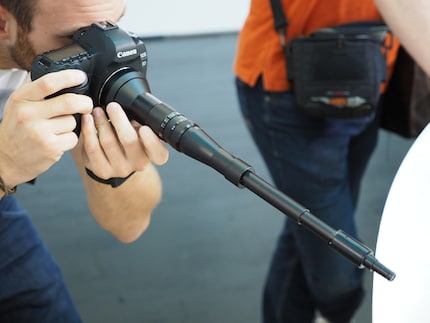
Source: ephotozine.com
My interest in IT and writing landed me in tech journalism early on (2000). I want to know how we can use technology without being used. Outside of the office, I’m a keen musician who makes up for lacking talent with excessive enthusiasm.
Practical solutions for everyday problems with technology, household hacks and much more.
Show all



